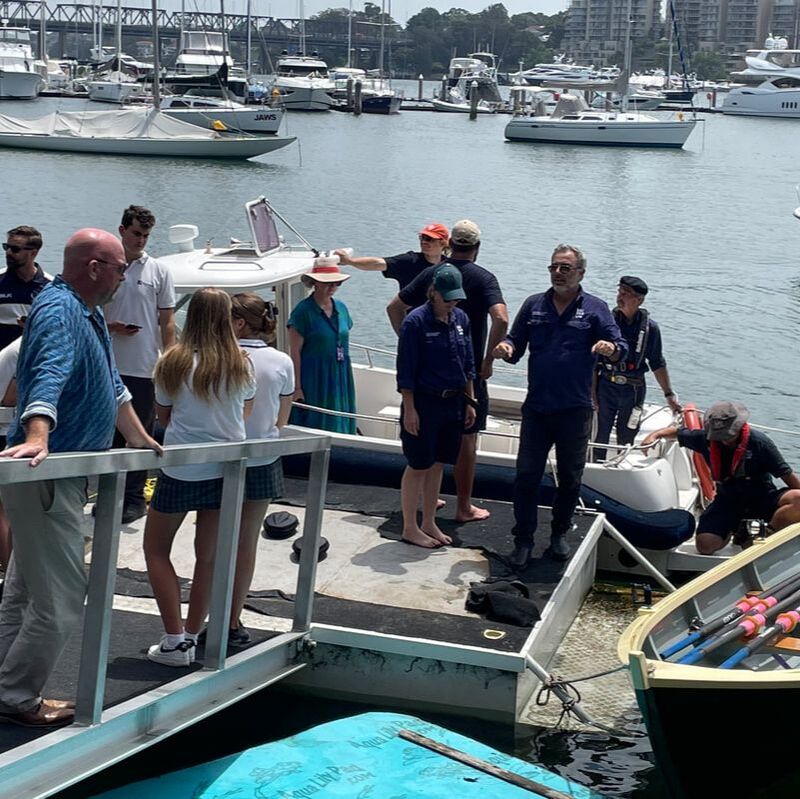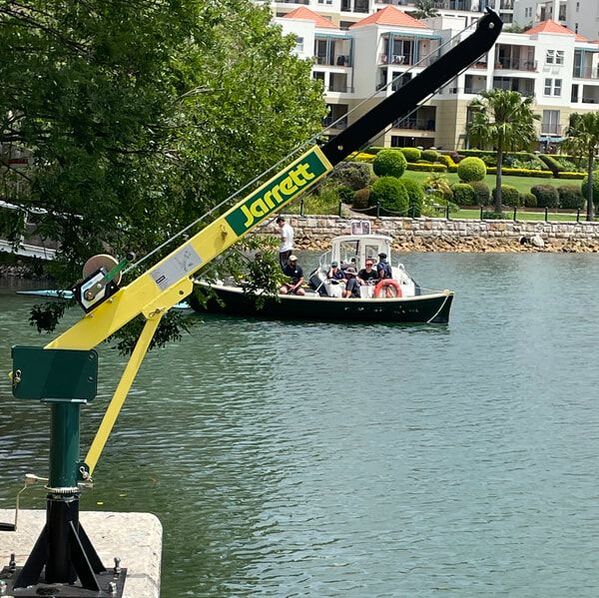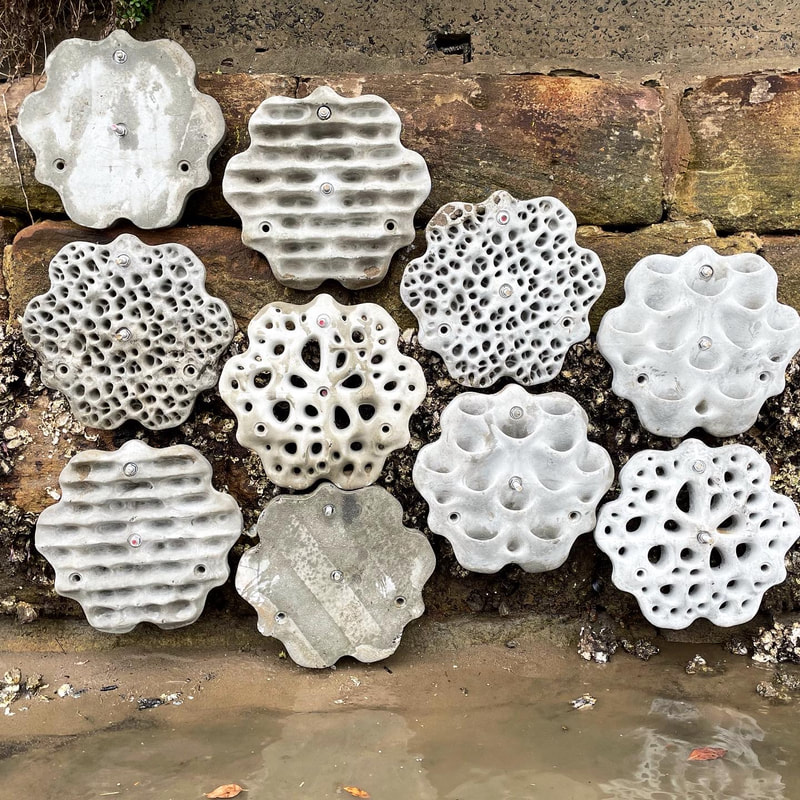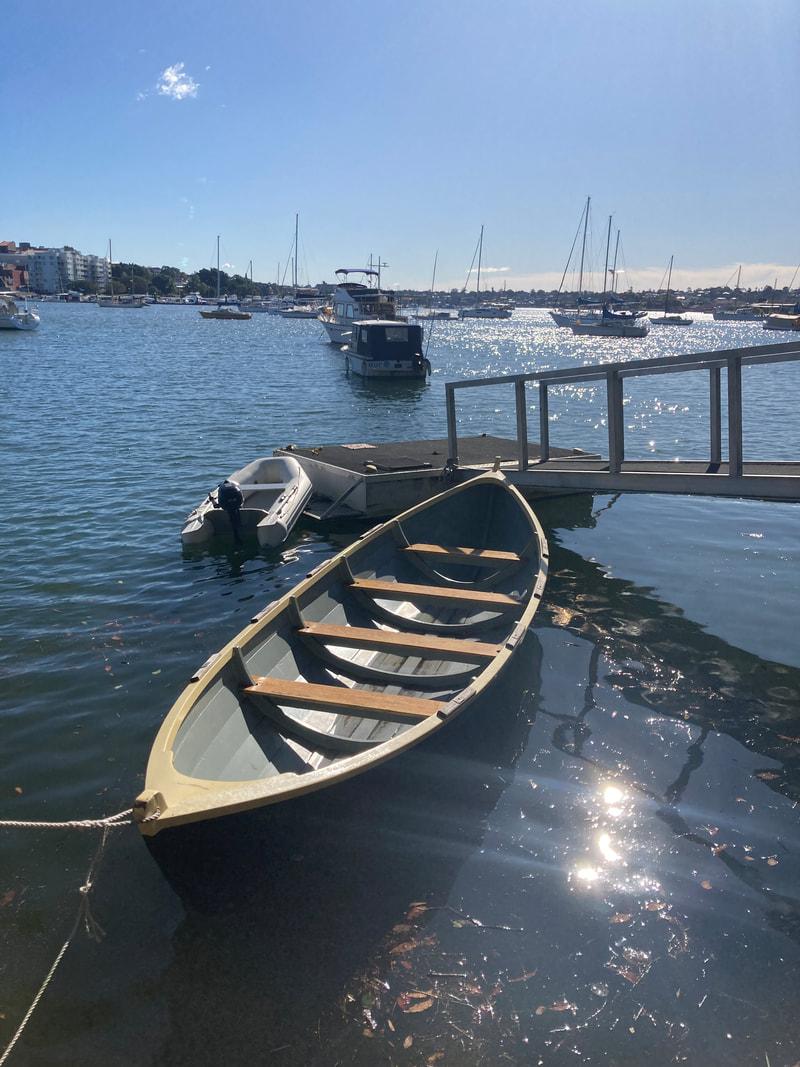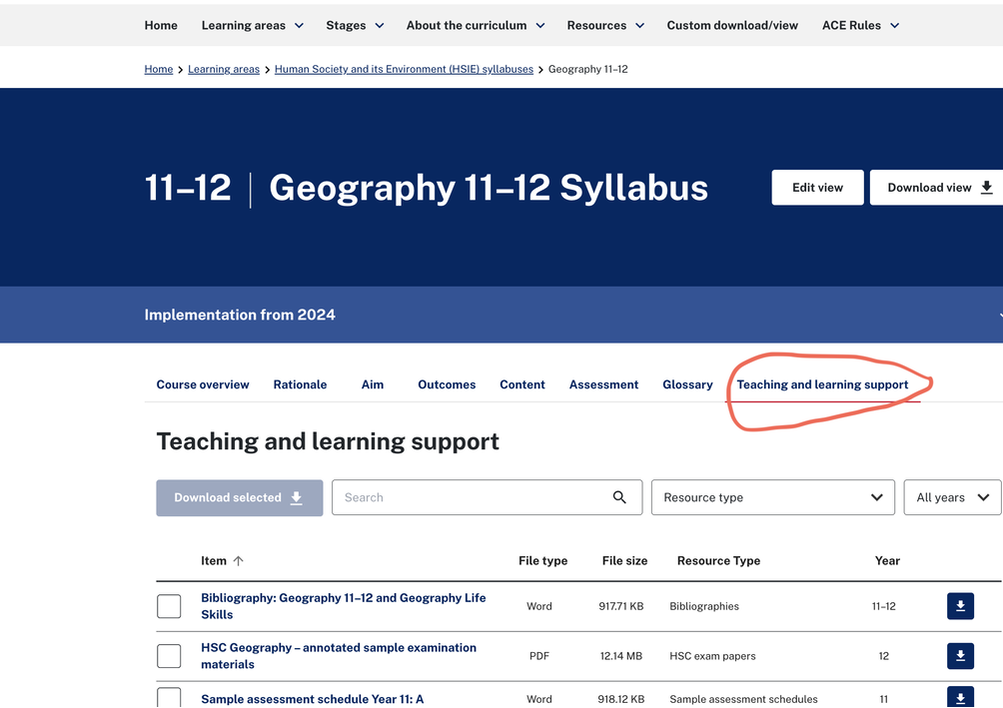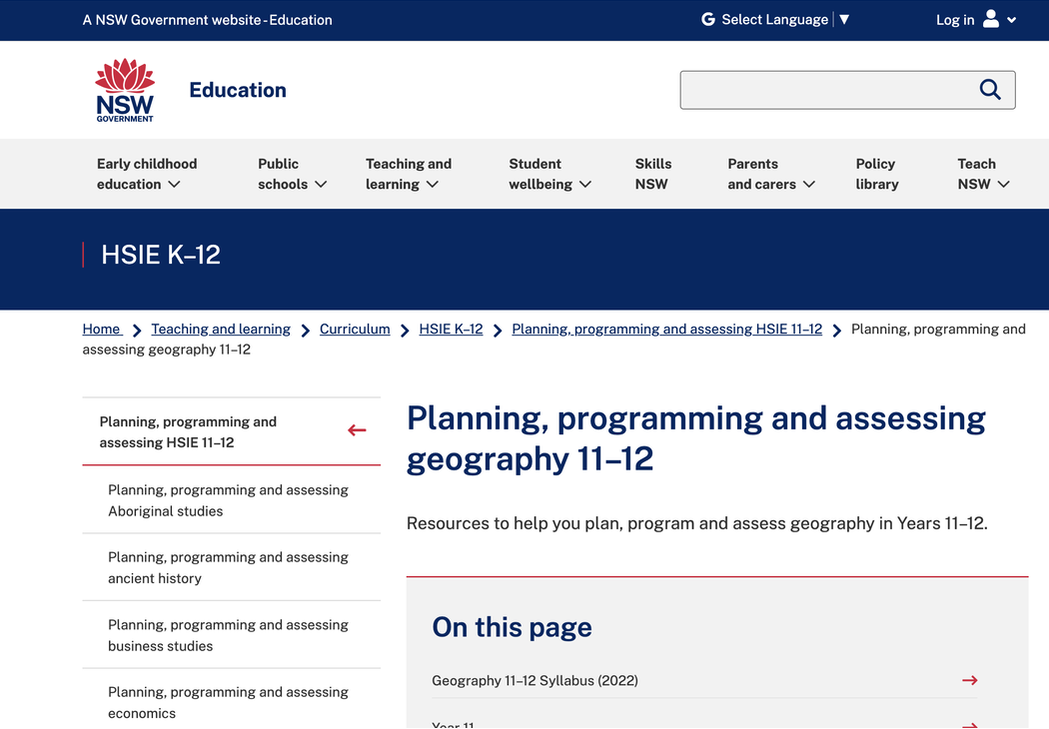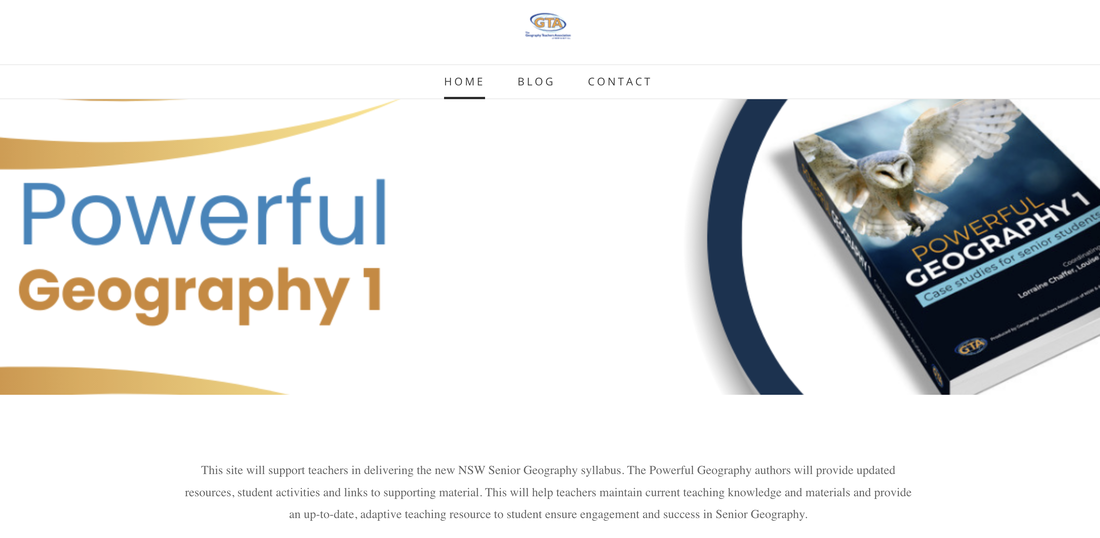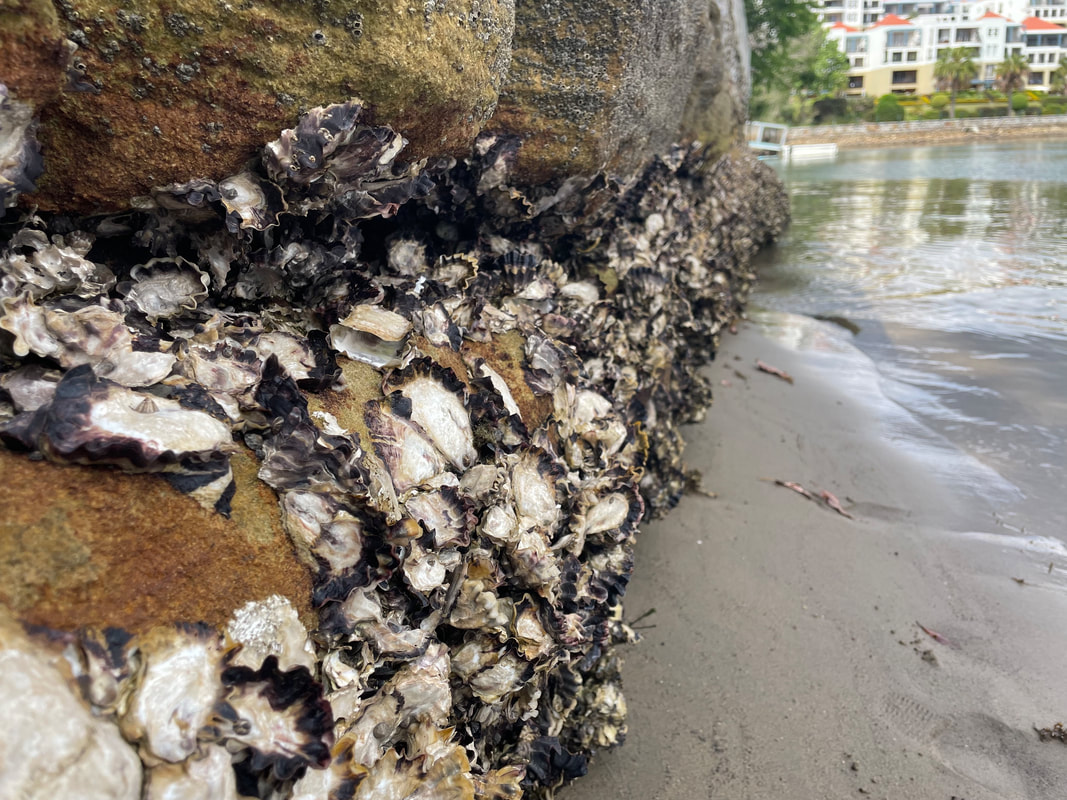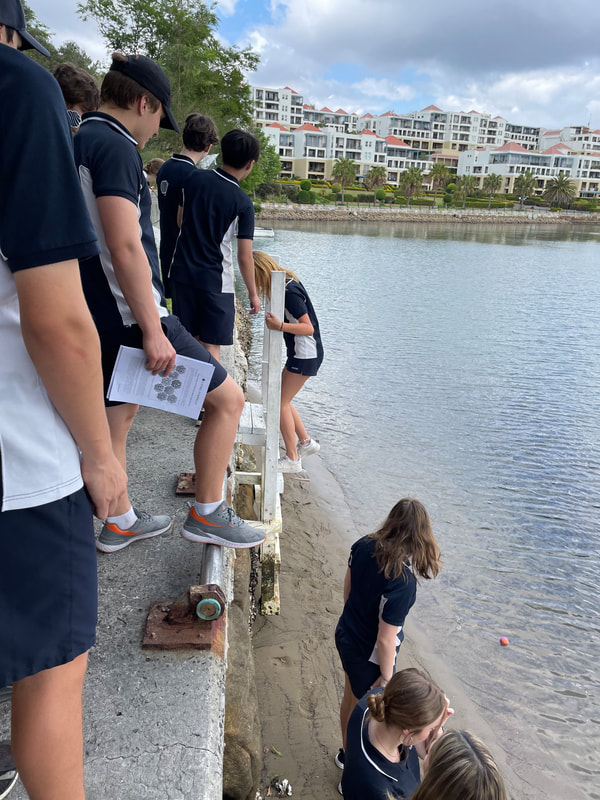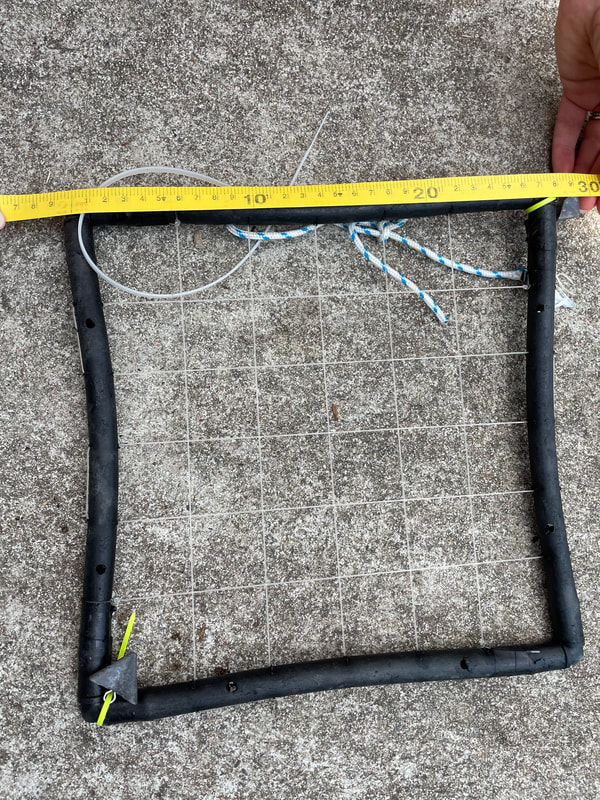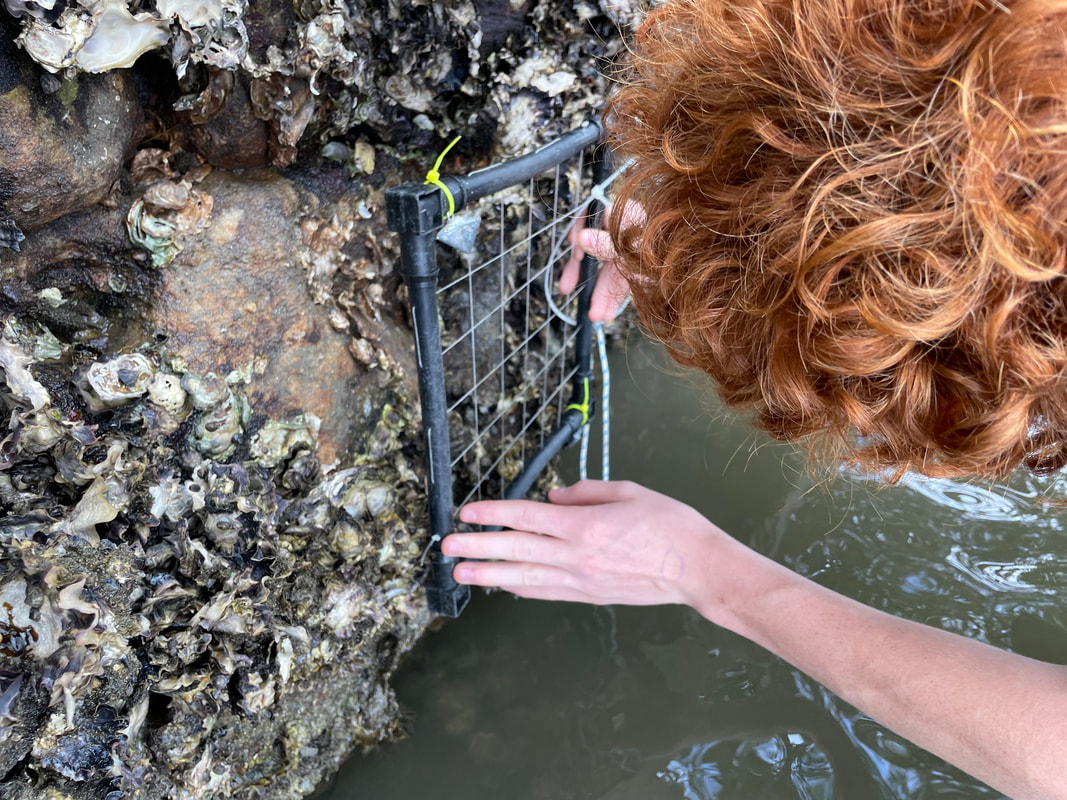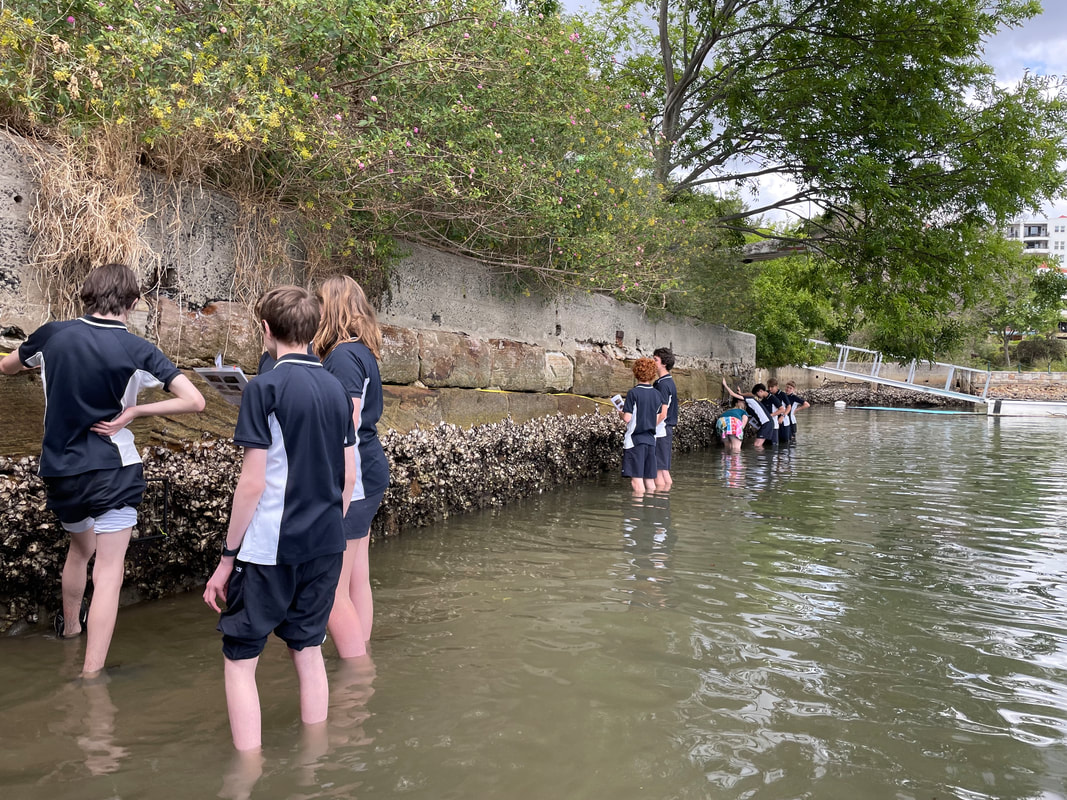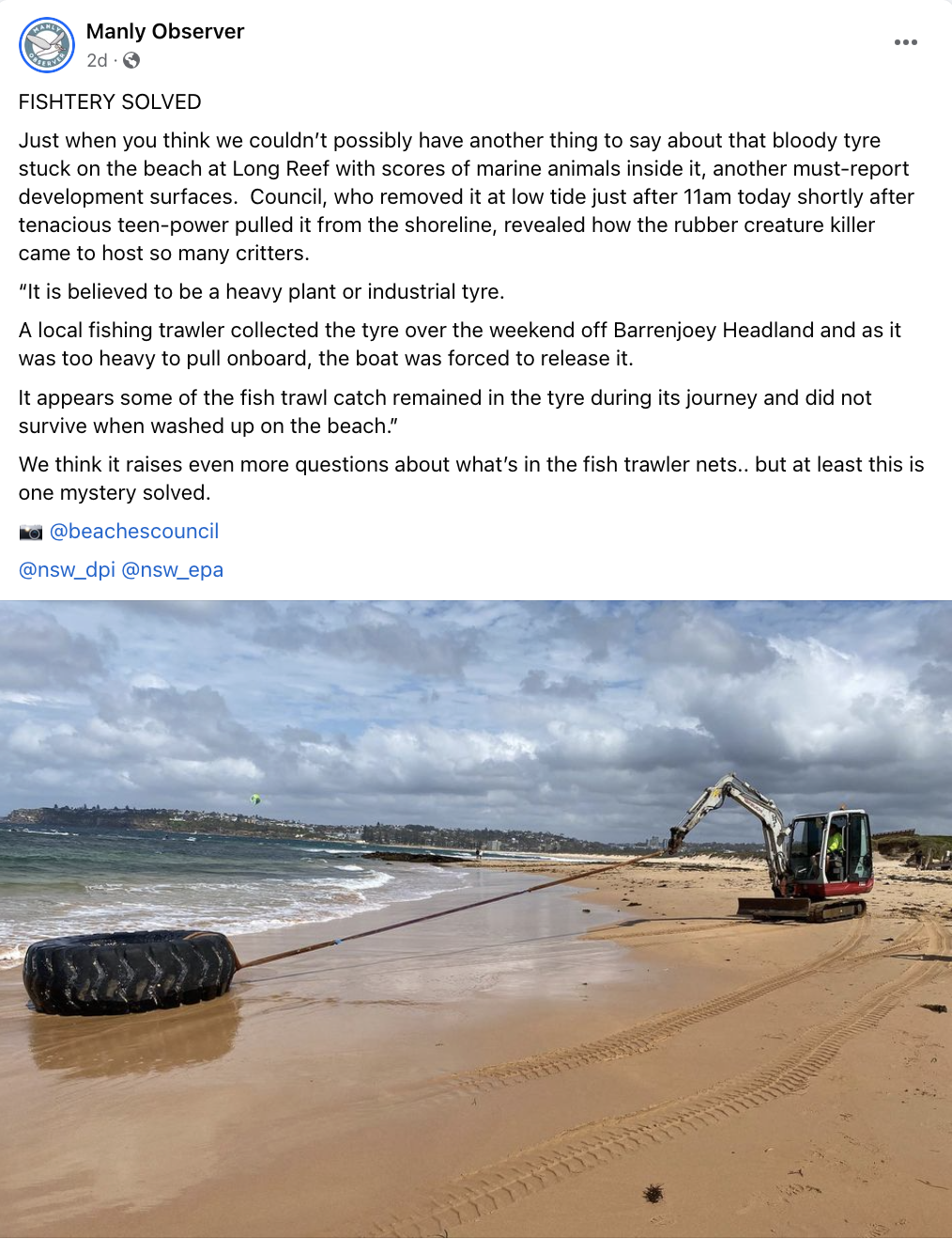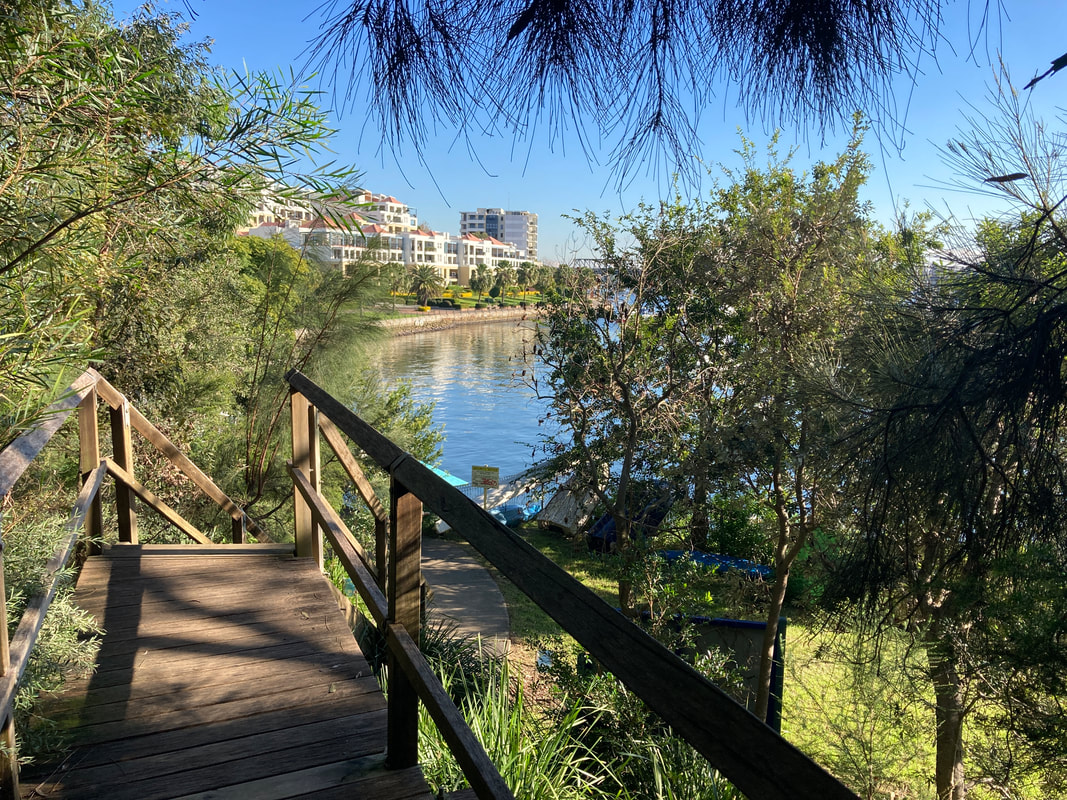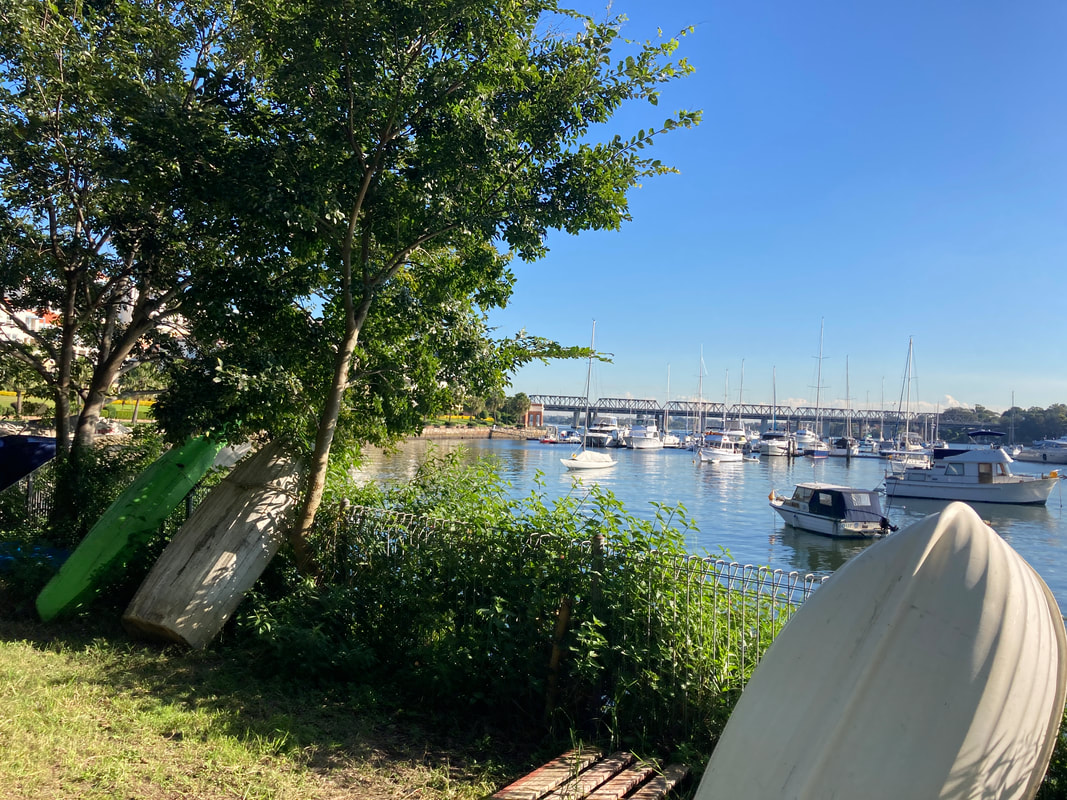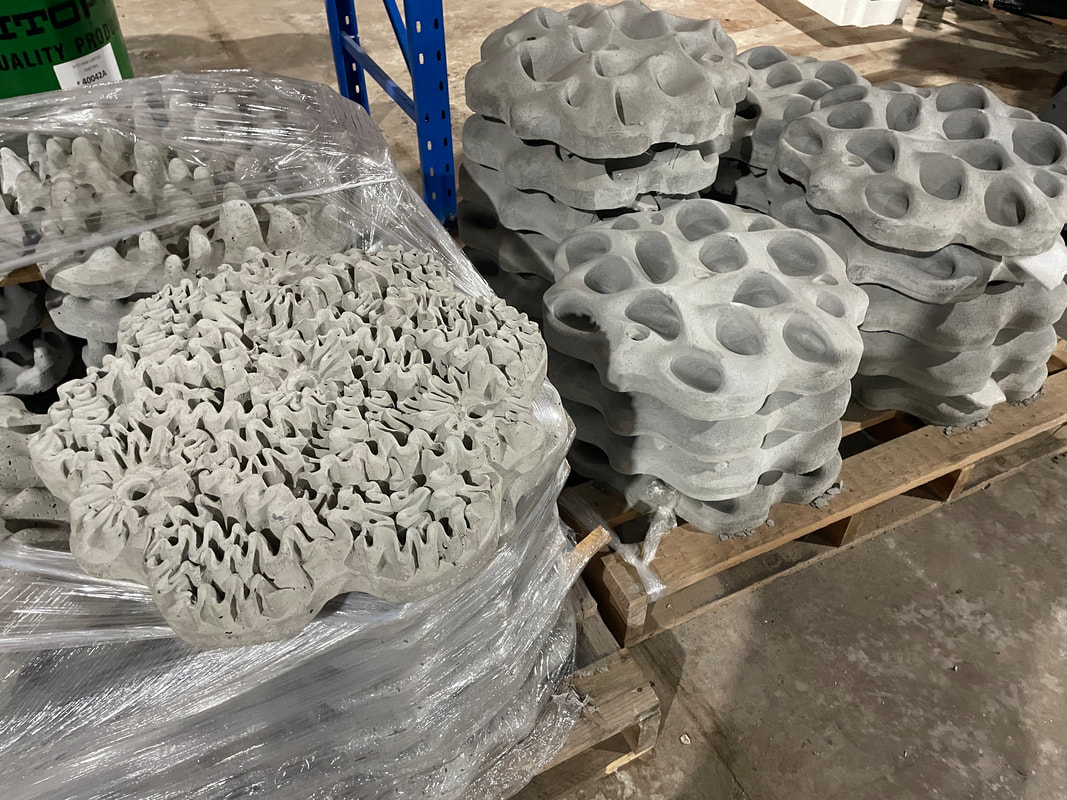|
On 7 December, a community event was held to celebrate the success of the Balmain Foreshore Project and to meet accountabilities related to funds received. The event was attended by representatives from the Australian National Maritime Museum, Sydney Institute of Marine Science, Living Seawalls, Transurban - West Connex Community Grants as well as teachers and students from the school. The event kicked off with a team of staff from the Australian National Maritime Museum towing the restored and fitted student-built St Ayles skiff and staff having a row around the bay. One of our staff on the Balmain Foreshore Project Team helped students demonstrate the use of the underwater drones for our guests, we showed our guests the new Living Seawall panels and the Jarrett backsaver crane and educational signage. The project was only successful as a result of a team of motivated, likeminded staff that came together regularly to assess progress, make adjustments to the program, engage with experts in a range of relevant fields and work towards keeping students engaged in the project. We were lucky enough to have ongoing support from a range of organisations who assisted us as we explored the directions of the project, as well as the logistics of installing the various components. The project wouldn't have been possible without the support of The Australian Museum, Living Seawalls, the Sydney Institute of Marine Science, the Australian National Maritime Museum and the Harding-Miller Foundation for their input during the project. The project was mostly funded by the Transurban through a community grant. The Balmain Foreshore Project website has also been launched, where you can read about the various components of the project as well as its links with teaching and learning: Balmain Foreshore Project This is one of several posts about our Balmain Foreshore Project. Read more... Balmain Foreshore Project - Introduction Gardening Below the Surface - Operation Posidonia Balmain Foreshore Project - Trial Activities Balmain Foreshore Project - Implementation Balmain Foreshore Project - Living Seawalls Balmain Foreshore Project - Living Seawalls: Pre-Installation Biodiversity Survey Balmain Foreshore Project - Launch and 2023 Reflection
0 Comments
Quite a few people have reached out to me lately about what is available for teachers that are preparing for implementation of the new Stage 6 syllabus right now. As you probably already know, both the GTA book and the Kleeman book have not been released just yet, but are on their way. So here's some resources that you can get your hands on right away (this is literally a copy of some of the emails that I sent to people). NESA NESA has released support resources that can be found here (see screenshot attached):
Department of Education The DoE has started releasing support material but they are only about 2/3 of the way through the Year 11 course (see screenshot attached):
Powerful Geography 1
In. the lead up to the release fo the Powerful Geography 1 resource, an Author's Blog has been created to provide support for programming, lesson planning and integrating fieldwork. There blog can be found here: www.powerfulgeography.weebly.com Our Balmain Foreshore Project continues with a pre-installation biodiversity survey of our school's seawall today. Dr Rosie Steinberg spent time teaching our staff and students how to undertake the biodiversity survey so that it can be repeated over time to assess the effectiveness of the Living Seawall panels in encouraging biodiversity. A seawall has been selected along the school's property for installation. Students accessed the site by ladder and in most places the water was ankle or knee deep. In a few spaces it was a little deeper, but no more than mid-thigh. We had multiple teachers on supervision to ensure safety. The survey involved a quadrat method. The quadrats were fairly simple in design - something similar to poly pipe used for irrigation with fishing line to create intersections. They measure 25 cm square. The focus of the activity was an extended length of around 15 metres along the wall. 4 areas were identified for installation of the seawall panels, with control areas in between where panels would not be installed. The length of seawall is accessible at low tide, and sites were chosen for the panels along the oyster band and below (mid to low intertidal zones). Students worked in teams of 3-4 to undertake the survey. Students held a quadrat square along the wall, and then recorded the organisms found. This activity was repeated a number of times in areas that will have sea wall panels installed, as well as areas that will not (control sites). Students referred to the Living Seawalls Field Guide to identify Species groups - Molluscs, crustaceans - Mobile, Crustaceans - Barnacles, Ascidiacea (sea Squirts), Bryozoa, Porifea - Sponge, Polycheaete - Tubeworm, Algae - Erect Branching, Algae - Globose, Algae - Laminate, Algae - Articulated Calcareous, Algae - Filamentous, Algae - Encrusting, and Algae - Sheetlike. This is the first survey planned for this site. It is expected that this activity will be completed several times a year once the Living Seawall panels are installed.
I need to give a big shout out to Aria Lee the Living Seawalls Project Manager at the Sydney Institute of Marine Sciences (SIMs) who has been invaluable in helping us bring this part of our project together. This is one of several posts about our Balmain Foreshore Project. Read more... Balmain Foreshore Project - Introduction Gardening Below the Surface - Operation Posidonia Balmain Foreshore Project - Trial Activities Balmain Foreshore Project - Implementation Balmain Foreshore Project - Living Seawalls Balmain Foreshore Project - Living Seawalls: Pre-Installation Biodiversity Survey Over the last couple of weeks, the Manly Observer has been recording the appearance and removal of an industrial tyre at Long Reef and the actions of mostly young people in the community to relocate it. They removed the sand that had built up inside it to try to make it easier to move, but each time they took out a layer of sand they found a variety of fish, rays and juvenile sharks. In all, around 80 marine creatures were removed from the inside of the tyre. Read the full story here: How 80 dead creatures came to rest inside an industrial tyre on the Long Reef Shoreline The reporters and community engaged in discussions about how so many marine creatures could have made their way inside the tyre. Some suggested that it was being used for shelter, and then as the tides went out animals became trapped. Eventually the group managed to move the tyre away from the shoreline, and it drew enough attention that the local council became involved the remove it from the beach entirely. Council reported that a local fishing trawler had let them know that they had unintentionally pulled up the tyre out of the water, but it was too weighty to bring aboard the ship, and they released it back into the water. The creatures inside the tyre were most likely to have been bycatch, caught in the trawlers net.
This is a great little story to use in the classroom. Active Citizenship It highlights the importance of active citizenship in the most practical way. It shows that how young people can have an impact on their environment, work collaboratively and achieve something tangible that initially seems beyond their capacity. It demonstrates how collective action can get the attention of media, government and the community and bring about more change than the individuals are capable of by themselves. Geographic Investigation This story is a great way to talk to students about hypotheses, assumptions, using sources, and drawing conclusions. The teenagers began their own investigation of the tyre, found the dead creatures and assumed the tyre had caused the deaths. The tyre may have caused some of those deaths. The idea of fish getting caught on the low tide is entirely plausible, but doesn’t seem to account for the huge number of creatures found. Regardless, I love that some mostly incorrect assumptions resulted in these teenagers doing something great (removing rubbish from our oceans). Contacting additional sources – like the local council - led to the alternate and more plausible explanation of the involvement of the fishing trawler. Let’s hope these young people are now encouraged to find out more about trawling. Problem Solving and Mystery The way this story unfolded on social media was really interesting and engaging, and this could be replicated in a classroom by only providing some pieces of information at a time and allowing students to problem solve and eventually solve a mystery. Students could be presented with a range of scenarios to explore - the tyre in the water, the creatures in the tyre, the weight of the tyre, the encroaching tide, etc. Student could be asked to problem solve each step and be given roadblocks or positive outcomes dependent on the solution they come up with. Open ended questions could be provided to encourage deeper exploration of coastal environments, environmental issues and management strategies. The structure could almost be set up like a murder mystery, with clues along the way, and students trying to solve the crime. It is easy to fall into a trap of thinking that environmental issues are too big for an individual to have an impact. I have only recently had some conversations with students who felt they couldn’t make any real impact because the world’s problems were just too big. This is a great, short story to engage students with geography and show the impact that individuals and groups can have their local environment, but also that once that first job is one, there’s more to do! This week we picked up some Living Seawall panels to install on school property as part of the Balmain Foreshore Project. A section of our school property, along the water’s edge allows public access to the Bay Walk and is a thoroughfare accessed by members of the public. The project provides a unique opportunity for our school to contribute to environmental sustainability, teach students about their community responsibilities, and inform the public about environmental issues affecting the local community. As part of this project, earlier in the year, students heard from the Aria Lee, Project Manager of Living Seawalls who told students about the research and development behind the concept of Living Seawalls, the locations where they can be found around Sydney Harbour and globally, and the ecological benefits of Living Seawalls. A few months ago our Balmain Foreshore Project team was excited to receive a substantial Westconnex Community Grant for continuation of the Balmain Foreshore Project. As part of the Westconnex Grant, funds have been allocated to purchase and install Living Seawall panels on the seawall on school property in an attempt to improve water quality and encourage greater biodiversity in the local waterway. Prior to installation we will be collecting baseline data to identify the diversity of species currently inhabiting the seawall, and we intend to set up a longitudinal study to investigate change over time in species diversity.
This is one of several posts about our Balmain Foreshore Project. Read more... Balmain Foreshore Project - Introduction Gardening Below the Surface - Operation Posidonia Balmain Foreshore Project - Trial Activities Balmain Foreshore Project - Implementation Balmain Foreshore Project - Living Seawalls Balmain Foreshore Project - Living Seawalls: Pre-Installation Biodiversity Survey Outcomes
The outcomes have not changed much from the current syllabus to the new draft Geography syllabus, other than some minor phrasing. In the current syllabus there are 6 outcomes for both Stage 4 and 5, and the same applies for the new draft. GE4-3 - explains how interactions and connections between people, places and environments result in change, and GE5-3 analyses the effect of interactions and connections between people, places and environments have both been discarded. In place of them the following has been included for Stage 4: describes how Aboriginal Peoples interact with Country, and for Stage 5: explains how Aboriginal Peoples interact with Country. I think that 4-2 and 4-3 could have been combined to create a new outcome, and 5-2 and 5-3 could have been combined. This would enable the outcomes to retain the meaning of the original outcomes and still allow for the inclusion of the new outcomes. Concepts There have been some minor changes to the descriptions of concepts for each stage. The main difference is in the presentation of the information, which in the current syllabus is part of the K-10 Concepts Continuum, but in the new draft is just present in a page and a half of text. This is generally a positive change which makes it easier to read and understand. Inquiry Skills and Tools Both the Geographical Inquiry Skills and Geographical Tools have been presented in the new draft Geography syllabus as a list, rather than in the Geographical Inquiry Skills Continuum or the Geographical Tools Continuum. In these cases this is a negative change. Geography was introduced as a separate syllabus for primary students with the current K-10 syllabus. The continuums allowed teachers to know which skills and tools that students would know when they entered high school. At this stage the K-6 HSIE syllabuses haven't been released, so it is unclear whether Geography will still have a separate syllabus (I suspect not). Regardless, it would be reasonable to expect that students would cover some geographical concepts, skills, tools and content in a HSIE syllabus. As a high school teacher how can I know what skills and tools students already know in Year 7? High school staff could obviously conduct pre-testing, but the continuums provided some clarity and also provided a connection between primary learning and high school learning, providing opportunities for collaborative teaching and learning activities across schools. Content My main concerns about this syllabus relate to the content. Firstly the "Thinking and working geographically" sections at the beginning of the content of each topic seem to be in the wrong place and don't tie closely enough to the content. In the current syllabus, the content is organised by dot point questions (mandatory) that provide dash point lists of subject matter (optional) that could be taught to provide more detail. In the new draft there are a series of dot points with directive terms that a too generic to tie in specifically with the content listed. These could be rephrased and placed more closely with the content that they relate to, or else left out for teachers to use their own discretion (drawing on sections at the beginning of the syllabus). The content has been cut significantly to make it clearer which parts of the syllabus are mandatory (headings and dot points) and which parts are optional (in the footnotes). While I appreciate that this is to achieve a more streamlined, simple syllabus, this could have more easily been achieved by improving teacher professional learning around the parts that are mandatory and optional in the current syllabus. The syllabus now seems overly simplified. Learning Across the Curriculum When the Australian Curriculum documents were first released they included general capabilities and cross curriculum priorities. In the NSW re-write of the Australian Curriculum, these were rebranded to Learning Across the Curriculum and included Cross-curriculum priorities (Aboriginal and Torres Strait Islander histories and cultures, Asia and Australia's engagement with Asia, Sustainability); General Capabilities (Critical and creative thinking, Ethical understanding, Information and communication technology capability, Intercultural understanding, Literacy, Numeracy, Personal and social capability); and Other learning across the curriculum areas (Civics and citizenship, Difference and Diversity and Work and enterprise). In the new draft syllabus, the old "Learning Across the Curriculum" will be known as "Capabilities and Priorities". It seems that this will include the other areas that NSW included in the current syllabus that were not in the Australian Curriculum, however there is insufficient detail at this stage to be sure. The new draft Geography syllabus does include a list of Capabilities and Priorities, nor does it include the coding of content that is included in the current syllabus to show where to include them. I would suggest that this area needs to be a little clearer - at the very least it needs to include a list of the Capabilities and Priorities. Creating written texts Geography easily lends itself to the inclusion of literacy and numeracy development. There are two sections of the new draft syllabus that describe the importance of teaching writing in Geography (page 5 and page 12). The written texts are specified as "descriptions, explanations, discussions, exposition and reports". As literacy is one of the General Capabilities, this seems like a bit of a double-up. Key Inquiry questions Key Inquiry Questions have been removed from the current syllabus. In the current syllabus the inclusion of outcomes, key inquiry questions and content is unnecessary. The removal of Key Inquiry Questions in the new draft Geography syllabus simplifies the topics and is a positive change. I have a Year 9 Elective Geography class this year and we are just starting the Global Citizenship topic. The topic starts by looking at what citizenship is, roles and responsibilities of citizens and moves on the explore global citizenship and and global challenges. In the first lesson I raised the idea of learning part of the topic through a community/city simulation without having thought the idea through entirely, The students loved the idea. I was thinking that it would be based loosely on a game like SimCity (old school I know) but run more like the way Australian Business Week runs. Students would work as a class and in groups to make decisions about the city and its operation, while learning about concepts like understanding varying perspectives, global awareness, intercultural understanding, shared responsibility and sustainability. I would provide resources and responses to their actions which would drive how the town was running, the interactions between citizens and their exposure to global issues. The lesson sequence includes the standard kind of activities where we brainstorm the characteristics of an ideal citizen, discuss the roles and responsibilities of citizens and how Australian citizens are connected to the world. Students completed practice citizenship tests found here: Australian citizenship practice test Setting up the town simulation Designing the town Students were provided with some time to work together to create the town. This was a paper-based, cut-and-paste craft activity, which the students seemed to really enjoy. It was a bit "primary school" but I think occasionally the students like being off their computers and doing something hands-on. To build the city we used Paper Cities made by Joel. A vote was held to name the town: Thneedville Citizens The students were given a set of 20 characters and were able to choose their character. I gave them the option of writing their own character if they wanted to. The descriptions of the characters include a name, age, occupation, gender, marital status and number of children. Students were also provided with a description of how their character displays active citizenship in their city. I used Chat GPT to create the characters using the following prompt: Create 20 brief descriptions of characters that are representative of people living in a medium sized town in Australia. Include their name, age, nationality, job, religion, marital status, number of children.
Town profile and creation Students were provided with a town profile which included: location, population, population characteristics, employment by industry, age profile, income, dominant industries, economic development, and social issues. The ChatGPT prompt to create this was: Create a community profile for an imaginary town called Thneedville. Include information about population size and make up, employment by industry, age profile, income, dominant industries, economic development, social issues. Base the community profile on the island of King Island in Australia.
Electing the Mayor Students were asked to nominate themselves if their "character" was willing to run for Mayor. Students worked in groups to briefly develop election campaigns and a Mayoral election was held. A series of newspaper articles were provided that discussed the inauguration of the town and election fo the Mayor. The following Chat GPT prompt was used to create an article about the election of the Mayor: Write a mock newspaper article about a person who has just been elected Mayor of a town called Kneadville which is located on a small island. His election platform was carbon neutral energy, increasing taxes for the rich to invest in social initiatives for the town. Details about the person are: Name: Thomas Wilson Age: 72 Nationality: Australian Job: Retired school principal Religion: Christian (Catholic) Marital Status: Widowed Number of Children: 2
These resources took absolutely no time to create, and I was able to easily incorporate information from class discussions into the resources. One of the students commented, "Miss you've done so much work to prepare for this lesson". I told the students that all the resources had been created with Chat GPT, and that I was doing an experiment with them to see how it would work. I explained that I would be able to create resources very quickly that were responsive to what we had been talking about he previous lesson. The students were happy to explore how it would turn out.
One of the challenges of teaching is ensuring that your lessons are designed in a way that supports the learning of the all the students in your class. In the average classroom you might differentiate for high potential students, lower ability students, and EAL/D students. (Adjustments for students with specific diagnoses or disabilities will be addressed in another post).
What role can AI play in supporting differentiation? Let's assume you already have a lesson planned for students of general ability on a topic. Either post it online somewhere publicly so that you can just direct the AI tool to the website, or summarise your lesson plan so that it can be easily copy and pasted (ensure the formatting is super simple). Some prompts you could use in a tool like ChatGPT are:
As a trial, of this process I ran the following prompt:
ChatGPT produced a 7-point guide on differentiating the lesson (it was about a page and a half long) including suggestions related to content, process and product differentiation. Examples included providing advanced reading and opportunities for individual exploration (each with several sentences explaining how to do this). It provided a few options for allowing students to use different learning pathways, and also a few options of different products the students could create to demonstrate learning. Some of the advice provided was a bit generic, about differentiation strategies generally, but there were several good suggestions that were practical and could be easily used in the classroom. Following this I tried the following prompt:
This prompt provided seven different lesson activities which were reasonably original and fairly different to each other. This was even more successful when I choose a specific learning ability (e.g. for example a student with low literacy levels). I'm still exploring what this can do for supporting teachers to differentiate, but in these first few tentative steps I think AI definitely has something significant to offer. Moving forward, it will be fairly simple to create multiple differentiated versions of the same lesson very quickly to best cater for our students. The key is going to be knowing how to ask for what you want. My hint: keep asking more questions... It's that joyful time of the semester again where everyone is setting and marking a lot of assessments and writing junior reports. Tensions are high, patience is low and sleep is something we catch up on during the weekends. Many classroom teachers are writing reports for close to 200 students. While teachers are more than capable to writing their own comments, it is a repetitive task - often commenting many times on the same tasks or skills, and it can be hard to come up with original comments particularly towards the end of the reporting cycle. I came across a page on SchoolReportWriter discussing using ChatGPT to generate report comments, and while I'm not sure I would want to rely on ChatGPT to write comments about specific students, I was interested to see what it could do to generate comment banks for staff to use across the school. I concentrated on specific elements within a report comment, so that different sentences could be pieced together from different categories to make up a complete (or near complete) comment. Obviously they would still need to be personalised and checked to ensure that they meet the requirements of the school's report style guide. I used Chat GPT to generate a series of generic report comments for specific topics such as : - academic achievement based on basic performance descriptors (Outstanding, High, Sound, Basic, Limited) - attendance - technology use - attention and application to school work - completion of classwork - research skills - literacy - numeracy - critical and creative thinking I used ChatGPT and the following prompts to generate the comments:
I was actually really impressed with most of the comments that were generated, and I ended up with 17 pages of report comments that could be used by most staff. I did go through and make edits. One of the main issues was that some of the comments were generated in first person. I experimented with asking ChatGPT to produce comments in a passive voice, but I didn't like the way the sentences were structured - they were much too clunky. It was easier to rephrase them myself. I also deleted some of the comments because I felt they were too negative, not phrased in a way that parents would appreciate or didn't convey a message that was consistent with the key messages of the school. Report comment banks are nothing new, but ChatGPT allowed me to generate a comprehensive report comment bank very quickly and I was able to tailor it for specific items. If I was to develop a HSIE specific set I would enter specific tasks, fieldwork, skills, Business Reports, etc. I was impressed with the ability of ChatGPT to complete a job that will hopefully reduce teacher workload. Click the icon below to download the Reports Comment bank generated by ChatGPT.
This is part 4 of a number of posts about Fieldwork - Reef Surveying. Read the other posts: Fieldwork - Reef Survey - Preparation Fieldwork - Reef Survey - Where to snorkel Fieldwork - Reef Survey - Student Activities Any active learning, where students are out in the field and enjoying nature is good for the students, good for us as teachers and helps to promote the real world application of our subject. Introducing students to snorkelling will expose them to a whole new world that they may not have engaged with before. It will encourage them to be more passionate about what they are learning, be more active in trying to protect environments and hopefully engage in more active citizenship to address environmental issues.
Snorkelling is a great activities for Year 9 Elective Geography students studying Oceanography. There has been growing recognition of the Great Southern Reef as an excellent case study for Year 10 Environmental Change and Management and Year 12 Ecosystems at Risk. It could also be used in the new Stage 6 syllabus for the new Year 12 Ecosystems and Global Biodiversity topic. Unlike a case study of the Great Barrier Reef, students could actively engage in fieldwork multiple times within a topic if your school is relatively close to the coast. Even if you aren't close to the coast, it is a lot easier to organise an excursion that doesn't involve air travel, so it is still a great option. Fieldwork for this case study is also a lot more economically accessible if you teach in a school with a low or complex socio-economic background, or have a group of significantly disadvantaged students.
In Elective Geography, in the Oceanography topic, reef surveying could link with the investigative study investigating an issue relating to the use of oceans. This could include an issue such as: crayweed or seagrass loss in the Sydney region/North Coast/South Coast, biodiversity in the Sydney region/North Coast/South Coast, or a similar issue that you identify as a class that the students are interested in. In the Environmental Change and Management topic, reef surveying could link with work completed on the Investigative study, addressing aspects of: - biophysical interactions - causes, extent and consequences of change - examples of some management strategies In the Ecosystems at Risk topic (current Stage 6 syllabus), reef surveying could link with the case study of an ecosystem, addressing aspects of: - geomorphic and hydrological processes - biogeographical processes - human impacts - management strategies In the Ecosystems and Global Biodiversity topic (new syllabus - to be implemented in Year 12 in 2025), reef surveying could link with the investigation of an ecosystem (this would need to be the example within Australia). It could address aspects of: - characteristics of the ecosystem - human-induced modifications - responses and strategies |
Categories
All
Archives
December 2023
|
||||||||||||||||||||||||||||
